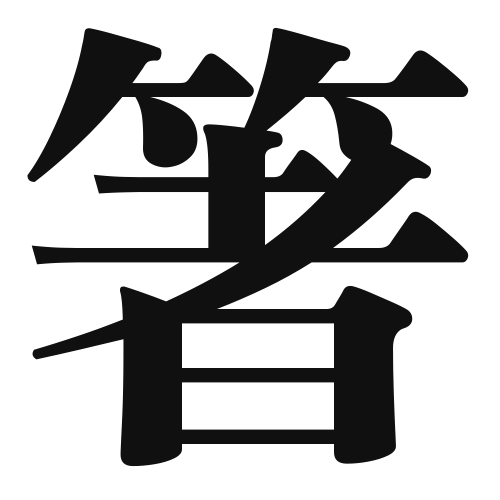1. Overview of Meaning
The kanji “箸” (hashi) means “chopsticks” in English. It refers to the traditional eating utensils used in East Asian cuisine, particularly in Japan, China, and Korea.
2. Formation and Radicals
The kanji “箸” is a compound character, which means it is formed by combining different elements. It consists of the radical “竹” (take), which means “bamboo,” and the phonetic component “者” (sha), which contributes to its pronunciation. The use of bamboo in the character reflects the material commonly used to make chopsticks.
3. Examples of Usage
Common words and phrases that include “箸” are:
- 箸置き (hashioki) – chopstick rest
- 割り箸 (waribashi) – disposable chopsticks
Example sentences in daily conversation:
- 「箸を使って食べるのが好きです。」(Hashi o tsukatte taberu no ga suki desu.) – “I like to eat using chopsticks.”
- 「箸置きはどこにありますか?」(Hashioki wa doko ni arimasu ka?) – “Where is the chopstick rest?”
4. Synonyms and Antonyms
Similar kanji with related meanings include:
- スプーン (supūn) – spoon (used for different types of food)
- フォーク (fōku) – fork (another type of utensil)
Antonyms or contrasting terms include:
- 手 (te) – hand (as a natural eating tool)
5. Cultural and Historical Background
The use of chopsticks is deeply rooted in Japanese culture, symbolizing etiquette and refinement in dining. They are often associated with traditional Japanese meals and ceremonies.
Proverbs and idiomatic expressions related to “箸” include:
- 「箸にも棒にもかからない」(Hashi ni mo bō ni mo kakaranai) – “To be in a difficult situation” (literally means “to not be able to grasp with chopsticks or a stick”).
